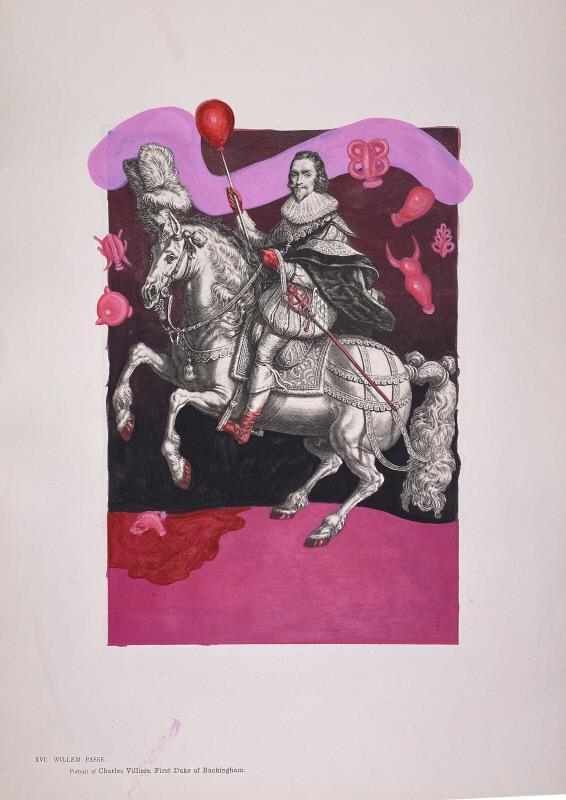
Reimagined in Pink
Collection:CSM Museum & Study Collection
Date: 2023
Designer: Elektra Moga
Dimensions:
Sheet: 420 × 297 mm (42 × 29.7 cm)
Medium: Gouache, acrylic paint, ink, paper
Object number: F.2024.15.CC
DescriptionArtist's statement:
The reimagined print is a reminder of continuing effects of the absurd, uninformed, misogynistic past of modern medicine and healthcare today. The misinterpretation of women’s bodies throughout history has manifested as speculated shapes and theories, ramifying in torture, suffering and death.
“A Short History of Anatomy & Physiology From the Greeks to Harvey”, by Charles Singer, includes a selection of these man-made diagrams and discoveries, related to the uterus and ovaries which had been veiled under the guise of modesty. This lack of information caused theories to arise, without ever seeing female reproductive organs. The cause of ‘hysteria’ among women was believed to be a ‘wandering womb’; where the womb would wander around the body, dubbed as a ‘living thing inside another thing’ by ancient greek physician Arateus of Cappadocia - also referred as the animal within a woman. A ‘wandering womb’ was the cause of any issue a woman held- with hysterectomies being the cure.
The fatality of such procedures and the lack of empathy for women is still strongly felt in gynaecology today. The print holds all of these concepts, whilst it appears lively and celebratory at first glance, history hides in plain sight and tends to repeat itself. The pink, feminised print also mocks the masculinity within the original illustration.
The reimagined print is a reminder of continuing effects of the absurd, uninformed, misogynistic past of modern medicine and healthcare today. The misinterpretation of women’s bodies throughout history has manifested as speculated shapes and theories, ramifying in torture, suffering and death.
“A Short History of Anatomy & Physiology From the Greeks to Harvey”, by Charles Singer, includes a selection of these man-made diagrams and discoveries, related to the uterus and ovaries which had been veiled under the guise of modesty. This lack of information caused theories to arise, without ever seeing female reproductive organs. The cause of ‘hysteria’ among women was believed to be a ‘wandering womb’; where the womb would wander around the body, dubbed as a ‘living thing inside another thing’ by ancient greek physician Arateus of Cappadocia - also referred as the animal within a woman. A ‘wandering womb’ was the cause of any issue a woman held- with hysterectomies being the cure.
The fatality of such procedures and the lack of empathy for women is still strongly felt in gynaecology today. The print holds all of these concepts, whilst it appears lively and celebratory at first glance, history hides in plain sight and tends to repeat itself. The pink, feminised print also mocks the masculinity within the original illustration.
